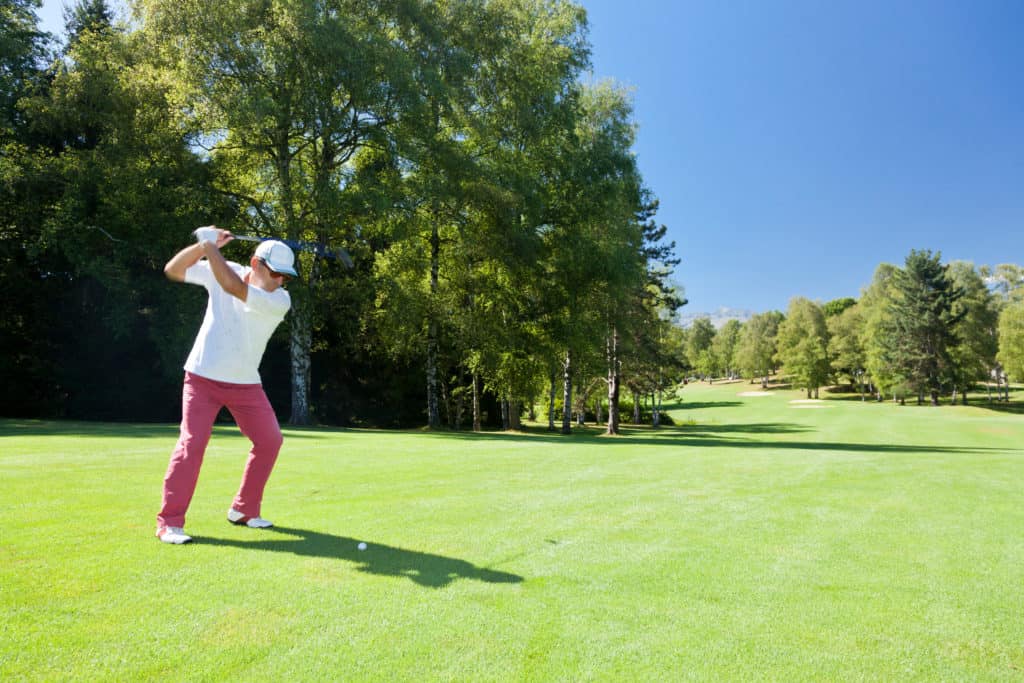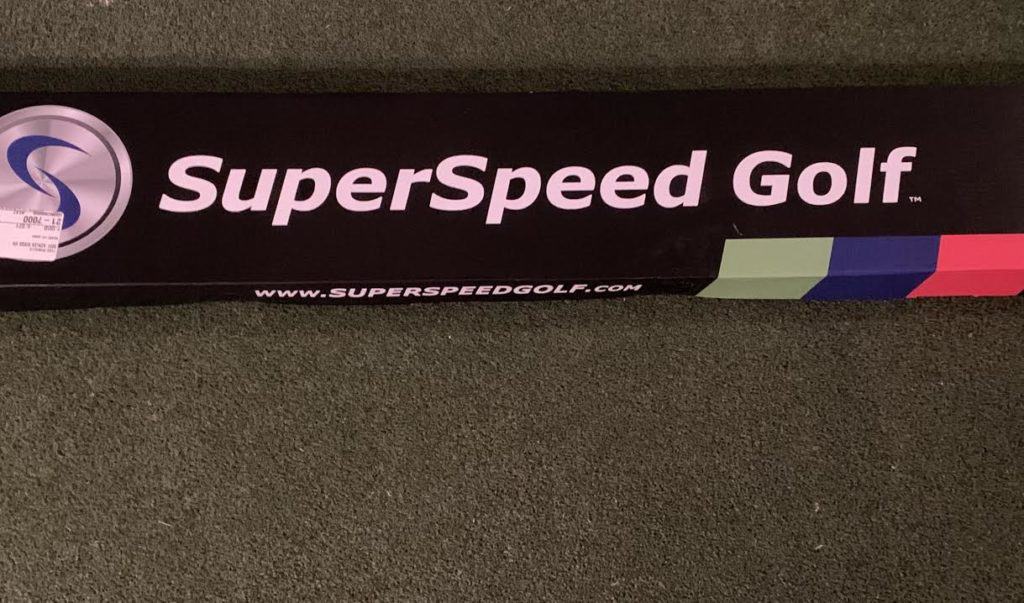There are many questions when it comes to the golf backswing.
Plenty of instructional books, articles and videos have been created spending a significant amount of time trying to help golfers perfect the backswing.
After 30 plus years of playing and helping plenty of golfers with their overall swings, I often reflect on just how important the golf swing really is!
Here is what comes to mind when I start thinking about the importance of the backswing.
- We have seen golfers with long backswings (John Daly) and short backswings (Jon Rahm).
- We have seen golfers draw the club inside (Raymond Floyd) and those that loop it outside on the backswing (Matt Wolff).
- We have seen slow backswings (Fred Couples) and quick backswings (Rickie Fowler).
So what is really important when it comes to the golf backswing if anything really at all! Plenty of questions come to my mind and many other golfers!
- Does the golf backswing really matter?
- Should I spend time perfecting my backswing?
- Should I use a short or long backswing?
- What does the backswing really do?
- What is the most common mistake in the backswing?
Let’s dive right in and look at some of these key questions to help you determine how much time you want to spend on your golf swing!

The Golf Backswing
#1: Does the golf backswing really matter?
It depends! I would make the argument you do not need the perfect backswing, as is proven by the different backswings we have seen great golfers play with over time. Did you know that Sam Snead dragged the club inside a bit and had a slight over the top move on the downswing?
The video camera becoming popular in the 1990s changed the history of the backswing. If you look back at the golfers in the 50s, 60s, and 70s, you will see many more golf swings where the swing went far more inside.
The golfer then arrived at the top and made a natural motion toward the ball. The video camera sent golfers and instructors on a mission to build the perfect looking swing in hopes that it would create consistency. Many believed that by keeping the club on a similar plane back and through would help golfers reach greatness. Think of Nick Faldo’s swing as a great example of this type of swing.
My conclusion is that there are other more important things to focus on in the golf swing such as the impact position, your tempo, swing speed, a stock shot and quality of contact.
If you can make solid contact, send the ball on a consistent start line with a predictable curve, while having enough swing speed to play the course, you are in great shape.
I would recommend spending time building skill on the key areas in the previous paragraph.

#2: Should I spend time perfecting my backswing?
No, while you will want to have a swing that is functional to produce the shots you need to hit, the backswing won’t play a major factor in what your swing ultimately becomes.
One of my favorite quotes comes from Arnold Palmer.
“Swing your swing. Not some idea of a swing. Not a swing you saw on TV. Not that swing you wish you had. No, swing your swing. Capable of greatness. Prized only by you. Perfect in its imperfection. Swing your swing. I know, I did.”
Golfers who go down the rabbit hole of trying to produce the perfect backswing fail to build skill where it matters most: quality ball striking, start line control, and swing speed. Build skill in these areas and you are on the path to a better swing, regardless of how it looks on camera.
Weirdest Golf Swings of All Time!
#3: Should I use a short or long backswing?
You should use whatever is most natural to you. Overtime, depending on if you are looking for more distance or accuracy, your swing might lengthen or shorten.
There are certainly pros and cons to the shorter swing and the longer swing. Great golf has been played with both. Be aware of the length of your backswing, but once again don’t spend significant time trying to make major adjustments in this area.

#4: What does the backswing really do?
The backswing is ultimately setting you up to transition into the downswing. For some golfers the long backswing might be best or the swing that goes way inside or outside.
Once again, there isn’t a picture perfect swing that works every time. If this was the case Ernie Els and Nick Faldo would have won every golf tournament they competed in and Jim Furyk wouldn’t have shot 58. Functional golf swings over perfect visual swings will win at a similar rate.
#5: What is the most common mistake in the backswing?
The most common mistake I see is the lifting of the arms, which feels powerful, but can throw the sequencing off.
Many golfers default to this lifting because it feels powerful and the mind wants more swing speed, but it often causes bigger issues than it is worth. Whether you swing is a little longer or shorter, you won’t want to have the extra lift at the back of the backswing.

Next Steps: Awareness and Skill Building
The next step is to be aware of the type of backswing you have, but do not get stuck trying to build the perfect backswing at the expense of building skill. Below are some great drills you can use to build skill in the most important areas: ball striking, developing a stock shot, and gaining additional swing speed.
The Low Point Control Drill
- Take some yard paint and paint a 1-2 yard long line.
- Setup with 55% of your weight on your front side.
- Try to hit the target side of the line and see how many times out of 10 you can do this successfully!
- Repeat this drill every day for a month, tracking your progress and your ability to to this successfully in trials of ten.
- You may need to start with half swing and progress to full swings.
If you are struggling, put more weight forward and work on keeping your head still to help control the low point in the swing.
Stock Shot Drill
- At the driving range, set up an alignment stick about 6-8 yards in front of you, straight down your target line.
- If you have a second alignment stick, set the stick 3-4 feet right of the first stick (for a draw) or left of the first stick (for a fade).
- Complete your initial assessment to see how many times out of 10 you can start the ball to the right or left of your target. Pick one side and measure your game at this point.
- The goal is to eventually complete this successfully 7 out of 10 times!
Speed Training
The game of golf has evolved to where speed is important in the game of golf. The faster your swing, the further the ball flies and the more shorter irons or wedges you have into a green.
Training for speed is a great idea and one worth exploring! One of the great byproducts of the SuperSpeed System below is that many golfers increase their swing and improve their swing mechanics through the training.
If you are going to train for speed, I would highly recommend the SuperSpeed Training System.
Gone are the days of simply being content with the distance you currently hit your golf ball. Many older golfers have proven over the past several years that an increase in swing speed is possible.
There are training systems to help you get your game to the next level and distance is arguably the fastest way to make this happen!
My number one recommendation is to check out SuperSpeed Golf and their protocols to help you find a safe way to increase your swing speed.
I spent many years wondering how I can increase my swing speed. When I was playing junior golf, we weren’t fortunate enough to have some of the training aids and knowledge that is now available. Smart people have studied the golf swing and have created training aids and protocols to help all golfers increase their distance!
At around the same time, the statistics from the PGA Tour have become more clear and the importance of speed is acknowledged by many to be a key to being the best on the PGA Tour.
Within the past several years, there have been several products hit the market to make speed gains possible. While many people for many years waited for the latest driver to come out to gain an additional 5-10 yards, you can now do this even with your current clubs.
Did you know that with the SuperSpeed Training System you can gain 5-8% increase in swing speed as early as the first training session? This would allow you to gain somewhere between 10 and 30 yards depending on your current swing speed.
The SuperSpeed Training System is based on three different swing speed sticks all weighing at different weights. There is a green club that is 10% lighter than the average driver, the blue club which is 5% lighter and the red club which is actually 5% heavier!
Following their prescribed protocols the golfer completes the training every other day. The total time to complete most of their protocols is between 10-15 minutes. Most people can find the time to make this happen. The golfer will also need a swing radar to measure their progress.
The science behind the SuperSpeed Training System is based on overspeed training. Overspeed training has been around for several decades now and has been used by olympic athletics in the sport of Track and Field.
The science behind this overspeed training is based on the premise that your brain will only allow your body to move as fast as it feels it can stop safely! So, you get to work and swing the clubs as fast as possible, retraining your brain to allow you to swing your driver faster.
For more permanent results, the golfer should continue these training protocols for several months. The initial 5-8% is great and can become more permanent with the right length of training. The golfer can expect to continue to break down barriers every several months at a 1-2% increase.
My own experience has been an increase of 7-10 miles per hour on average from between 98-101 all the way up to 106-109. My goal is to hit the PGA Tour average of 113 mph in the coming months. I will continue to train every other day and watch in amazement as I am hitting drivers longer now than ever before!
Phil Mickelson (a senior golfer now) has been known to increase his swing speed in the past year or so and is close to 120 miles per hour in his swing speed. There are potential results for golfers of all ability levels and age!
Check the current price on SuperSpeed Golf System, here!
| Original Swing Speed | After 4-6 Weeks | New Carry Distance | Total Distance |
| 95 | 102 | 245 | 265 |
| 100 | 108 | 259 | 279 |
| 105 | 113 | 271 | 291 |
| 110 | 118 | 283 | 303 |

My Secret To Golf Improvement
Let’s face it, in order to get really good at golf, we must practice frequently. About five years ago, I made the leap and invested in a golf simulator build for my garage. I went with a SkyTrak Launch Monitor and the TGC software and can now play over 100,000 courses including Augusta, Pebble Beach, Bethpage Black, Whistling Straits. St. Andrews and many other of the top 100 courses in the world.
This golf simulator setup, which is more affordable that you might imagine, has been a game changer. I can now play golf everyday of the year regardless of rain, snow, cold weather or time of day. I can practice or play rounds of golf. I can stand in the 11th fairway at Augusta and with the auto-rewind feature I am able to practice my approach shots from various differences.
It is worth checking out through Rain or Shine Golf as they offer some incredible packages along with financing offers that are difficult to beat.
Some direct links to Rain or Shine Golf for pricing and financing:
I am an amateur golfer on a journey to get better, enjoy the game as often as possible and share my passion and knowledge with others. I have coached high school golfers at a high level and have a great passion for the game and want to give back. I enjoy learning about the golf swing and am currently studying to be a certified professional golf instructor. Join me in our journey to get better everyday.

